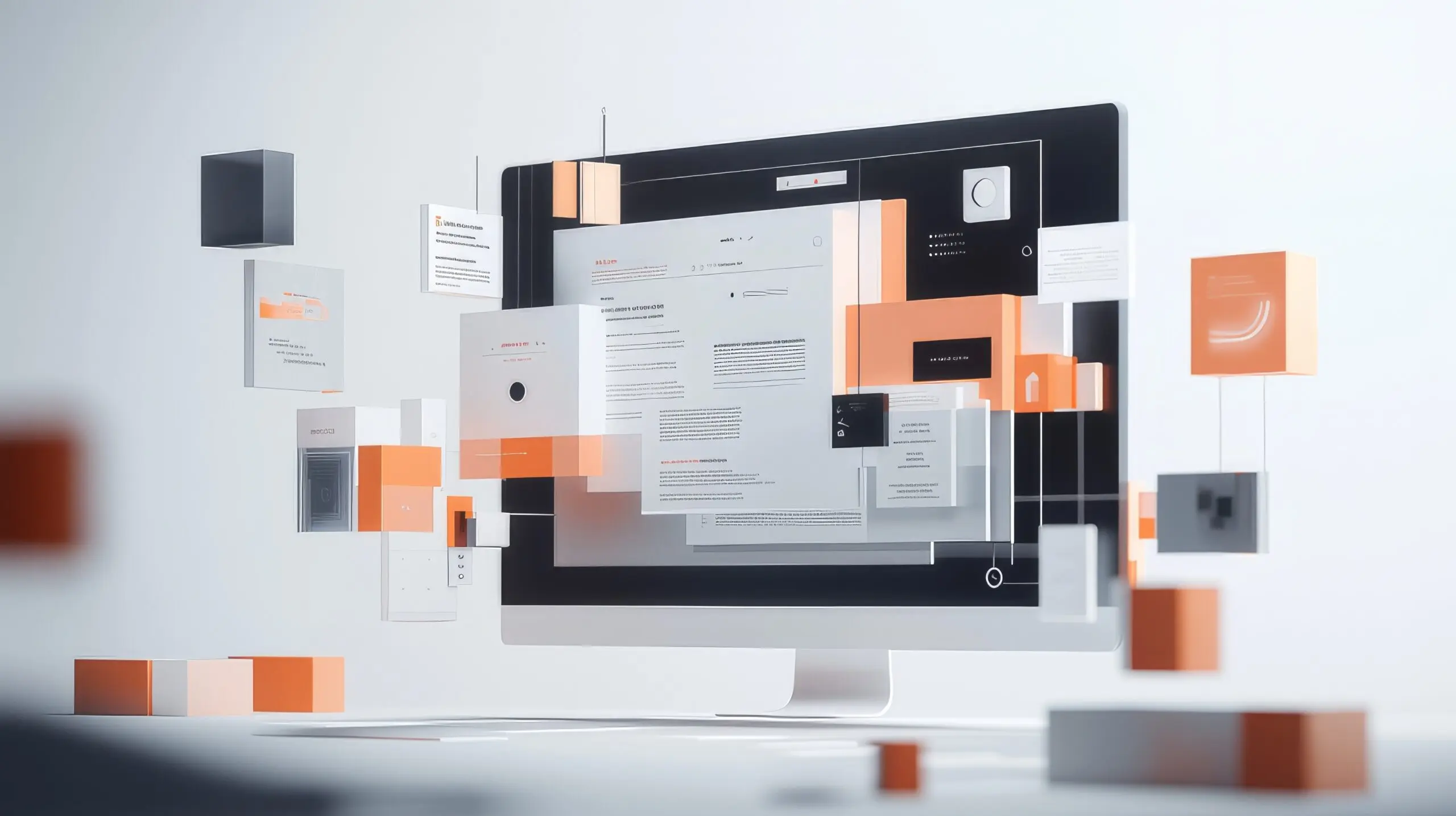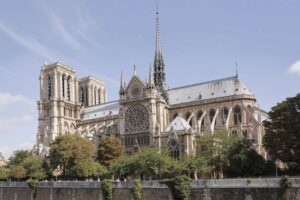The End of Austerity: An Introduction
For a long time, Brutalist architecture was known for its unashamed rawness. It was monolithic, geometric, and frequently thought to be cold or unfriendly. Béton brut, or “raw concrete,” the style’s most important feature, originated from the need for functional, low-cost building after World War II. It became a symbol of harsh, austere efficiency.
But there is a big change happening in 2025. People who buy luxury goods are tired of sterile, “over-polished” looks and are looking for settings that seem real and grounded yet are nevertheless quite comfortable. This desire has led to the movement that will define the decade: Soft Brutalism.
There is no contradiction in Soft Brutalism; it is a well planned balance. It is the art of combining the strong, honest shape of a brutalist structure with the warmth and emotional depth of high-end, tactile interiors. It’s where raw and sophisticated come together to make environments that are very forceful but also quite private. This is the new way to talk about luxury design that is sustainable, expressive, and oriented on people.

On the living room side, mirrored panels and a low, open bookcase punctuate the wall, which is accented by green plants and picture rails. In the foreground, the Straight Back armchair was designed by Jean-Michel Frank in 1932.Photo: James Nelson
The Change in Architecture: From Bunker to Sanctuary
The most important thing about old Brutalism was that it put utility over form and material honesty above everything else. Soft Brutalism keeps this honesty but changes the emotional tone.
Architects today aren’t getting rid of the concrete shell; they’re making it more like people. The transition includes design elements that are meant to contrast the rough outside with a cozy inside.
This change has also been called “Organic Brutalism,” which means mixing strong, industrial structures with natural things like reclaimed wood, wide glass windows, and plants that are built into the building. The idea is to make homes that feel strong but are nonetheless comfortable to live in. It’s about using the drama of the architecture without giving up comfort, so the house seems like a safe place to be instead of a fortress.
 design by simone bodmer-turner | photo by annie schlechter | via curbed
design by simone bodmer-turner | photo by annie schlechter | via curbed
Curved Geometry: Making the Edges Less Sharp
The shift away from hard, straight right angles is a big change from the past. Modern homes that are inspired by Brutalism have curving concrete walls and sculptural features that make the space feel more open and gentle. These curved shapes catch the light in diverse ways, which makes the style’s history less heavy and overpowering. This smart use of form is a big symbol of the new luxury.
The Main Parts of Luxury
Brutalism (Materials and Texture)
Texture is the battleground for Soft Brutalism. The new style is all about layered tactility, while classic Brutalism was hard and homogeneous.
The New “Velvet Concrete”: The Tactile Transformation
There is a material revolution going on in the concrete itself. Designers want concrete that looks rough but feels smooth.
Microcement and lime plaster are the unsung heroes of Soft Brutalism. Microcement makes floors and moist areas that are seamless and monolithic, and they last a long time. Hand-burnished lime plaster finishes make things even more sumptuous. This method gives the surface a soft, contemplative texture that is like velvet. It also spreads light and adds warmth that frigid, standard concrete could never produce.
Natural Stone and Wood: Raw concrete is now mixed with materials that are naturally warm and unique. Solid, knot-filled wood bases and natural stone (such travertine and unpolished marble) enhance structure and make the piece look real. The result is a palette where every material, even the raw ones, feels rich and planned.
The Velvet Counterpoint: Layers and Comfort
To get the “Soft” part, designers use fabrics that soak up sound and welcome touch, which is a big change from the hard architectural shell.
Velvet upholstery, especially in deep, earthy colors like sage green or terracotta, is the most popular type of seating. Layering raw silks, shaggy blankets, and handloom cottons adds dimension to the rooms, turning them from big, empty spaces into comfortable, expressive nests.
Warm Minimalism: This style takes the uncluttered idea of minimalism but not its sterile execution. It’s all about Warm Minimalism: keeping things clear while adding earthy colors, natural textures, and gentle directional lighting to make the room seem warm and inviting.
The Luxury Consumer’s Appeal: Why Soft Brutalism is Hot in 2025
The recent trend toward Soft Brutalism is mostly due to the values of the modern high-end shopper, who wants more than just looks.
The Sustainability Statement: Long-lasting and good for the environment
In 2025, “environmental responsibility” will be a big deal for luxury brands. The main ideas behind brutalism—longevity, durability, and a strong material mass—have been rephrased as a “powerful green statement.”
Lifetime Architecture: Concrete buildings last a long period, which means less waste, fewer material replacements, and better thermal performance. Architects are embracing the “adaptive reuse” of original concrete giants, choosing careful restoration over tearing down and rebuilding with more carbon. In a lot of respects, the style’s comeback is an eco-friendly makeover tale.
Bio-Cement and Local Sourcing: The utilization of modern, eco-friendly materials like bio-cement and recycled metals meets the luxury consumer’s need for clear, ethical sourcing and building methods that last.
Invisible integration with high-tech: Smart Living without seams
People today desire technology, but they don’t want it to get in the way of the beauty of the building.
The main tech trend of Soft Brutalism is “Invisible Integration.” This implies that smart lighting systems, automation panels, and radiant floor heating are all incorporated right into the concrete structure. The technology is there and works, but you can’t see it, so the area seems clean and raw. It’s the best way to show off your stylish, seamless lifestyle.
The Emotional Resonance: Realness Over AI Polish
As the world becomes more and more full of polished, algorithmic, and AI-generated images, the luxury market is looking for “authenticity.”
Soft Brutalism, with its exposed structures, evident flaws in the materials, and honest exposition of how a building is produced, gives us a “emotional anchor.” It breaks through the visual fatigue and gives you a style that is “opinionated, human-made,” and “tangible.” For the buyer, a home in this style brings up sentiments of “calm, strength, and clarity,” which is the ultimate modern luxury.
FAQs
Q: What is the main difference between Soft Brutalism and Traditional Brutalism?
A: Traditional Brutalism was all about stark, honest practicality, which frequently made spaces feel frigid. Soft Brutalism keeps the harsh material (concrete) and bold shape, but on purpose adds warm, opulent materials (velvet, wood, microcement) and lighting to make the spaces comfortable, welcoming, and very livable.
Q: Is Soft Brutalism only for single-family homes?
A: No. Soft Brutalism is a great style for homes, but it’s also a defining style for high-end commercial spaces like boutique hotels, galleries, and flagship retail stores. The honest, raw look of the style shows that the space is luxurious, real, and well-designed.
Q: How do designers add color to a concrete palette?
A: Color is added on purpose as a $\mathbfaccent}$. Designers start with a base of warm neutrals like sand and stone gray and then add rich, muted colors like mustard yellow, deep terracotta, and sage green through textiles, carefully chosen art, and sometimes tinted microcement or terrazzo floors.
Conclusion: The Future of Raw Luxury
Soft Brutalism isn’t just a passing fad; it’s a smart and practical answer to the cultural needs of 2025. The style redefines “raw luxury” by combining the strength of concrete with an unprecedented dedication to human comfort, health, and honest beauty.
Architects and designers who know how to use this contradiction will create the best interiors of the decade—homes that feel permanent and honest while also giving people the emotional and physical comfort they really want.
For more blogs like this CLICK HERE!!!
Reference:
Soft Brutalism: The Trending Interior Design Style in 2025
What is Soft Brutalism? — Seamless Overlays





